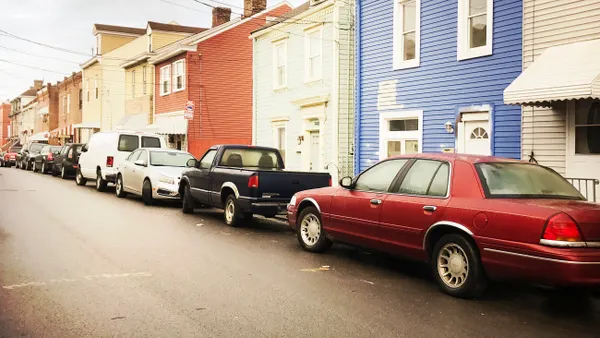The world of online communications and digital tools is growing. As information spreads over social media platforms and through email marketing tactics, other advanced operational systems are being developed. Even artificial intelligence (AI) has found its way into the communications world, often disguising itself as a helpful chatbot.
In the early 2000s, the Chief Digital Officer (CDO) position was born to help convert traditional "analog" operations to digitized systems. And while the private sector was quick to usher this position into its C-suite leadership, the public sector has been slow to adopt the title. In 2011, Rachel Sterne (now Rachel Haot) became the first CDO of New York City as a trailblazer for the position in a municipal setting. At the time, Government Technology described it as "yet another innovation" from former New York Mayor Michael Bloomberg.
Bloomberg wasn't alone in the decision, though. His staff included Todd Asher, former deputy commissioner of the Mayor's Office of Media and Entertainment, and now a senior member of the Bloomberg Associates Media and Technology team. As a nonprofit consulting group, Bloomberg Associates works as "evangelists" for the CDO position, helping cities from Oakland, CA to Paris develop digital communications strategies. Most recently, the group helped London's first CDO Theo Blackwell settle into his role and consulted the launch of his Smart London Roadmap.
Smart Cities Dive caught up with Asher to learn more about the importance of the CDO position, how cities can promote gender equality in its tech roles, and how tools such as social media can be used to bring communities together.
The following interview has been edited for clarity and brevity.
SMART CITIES DIVE: Why is it important for cities to have a Chief Digital Officer role, especially if they already have a CIO role? Should they replace one another?
TODD ASHER: I think it’s really an additive role. It's one that works with the CIO or CTO in the city — depending on the size of the city how much resource they have on those digital fronts — and often will also work with the economic development teams. So in New York City, the Chief Digital Officer [Haot] created a 90-day road map for all things digital, and in her consultation she met with all of the various city commissioners ... and then she worked with the Department of Information Technology, which had a CTO, and the Economic Development Corporation, which of course had a lot of the relationships with some of the major tech companies.
So her role was more to look at the the business needs and the usability of technology in city government to serve residents better — she did that in partnership with the CTO — and then also to look outside of city government and see how it could leverage the relationships with the technology companies to serve city needs. And that included things like internships, different sponsorship opportunities, free Wi-Fi in parks, but also how could the city help those tech companies and those entrepreneurs so that they could be more successful.
And one of the key things when we would hold convenings — and this has been the case now and in other cities with people in the tech sector — was a focus on talent and how could the city help in terms of talent. Part of that is an education and part of that is also helping to market the importance of the industry and the availability of jobs.
That's something that we've tried to replicate in other cities. With the CDO in Athens for instance, we helped them to create a digital council. And there are 10 multi-national companies, a lot of big names that you know like SAP and Microsoft and Google, who are all part of this council. There's no cost to participate in the council and there’s no discussion of things like procurement contracts, but each of the participants come around and give their perspective on what they're seeing the opportunities for the city of Athens are. They will also contribute free time and some of them also committed financial resources to helping move some of these programs forward.
Regarding your work with Theo Blackwell [in London], has he done anything that goes beyond expectations of what you thought the role would look like? Anything that you think other cities should learn from when trying to implement a CDO position?
ASHER: The thing that he is doing that I think is most unique and most interesting as chief digital officer is, the City of London is somewhat unique because the Greater London Authority (GLA), which is what Mayor Sadiq Khan oversees, has a policy and planning charge. And because the seat of national government is also there, the 33 boroughs of London do the direct delivery of service. So the GLA isn't responsible for picking up trash, they're not responsible for the education system, a lot of the direct services to residents, all of those come through the boroughs.
What Theo has created is something called the London Office of Technology and Innovation. It's an opt-in process, all the boroughs are invited to participate — I think he has a good half of them who have committed to participating in that — and that's where I think he's going to be able to make really big impacts because right now, if you move from one part of London to the other, you essentially have to reregister for all of your local services.
So those sorts of things don't transport because there's not a common use of standards or common use of systems. And obviously that's not going to change overnight, but having this body come together and sharing the things that they do that are successful and at least looking at interoperability standards, if not having outright standards over the course of time as they make changes and improvements, they could move toward having more standardized systems and more efficient delivery of service.
I think what he's looking to do is to also leverage scale because right now, each of those borough offices have an IT director but they're really left to themselves to be able to procure services and other things. But having a group of 33 that are working together I think will allow them to get lower cost services, better responsiveness from vendors. So it's just beginning ... It's a really interesting structure and it's unlike any other city.
I read the Bloomberg Associates' Digital City Tools report, and the focus on social media is interesting. As platforms like Twitter become increasingly polarizing, how can cities optimize social media? What are the challenges?
ASHER: There's two draws to using social media. One is that it can be very low cost, and the other is it’s where residents already are. So rather than creating another forum for discussion and expecting people to come to them, cities are coming to the realization that they need to go where people are. That’s definitely the positive message.
On the other side, cities haven't necessarily had these functions in the past so it sometimes has gone to the newest member of staff, or is something that could be set up by an intern during a summer internship. Some cities haven't really committed the resources to really integrating that digital communications role into the things that they do.
Other cities have tried to make those changes and sort of enhance the way that they're doing it, but sometimes they're still doing it in a somewhat older format where maybe they're focused on creating press releases and then they'll tweet out a press release — which is a good effort, but it doesn't really speak in terms that the people on social media are looking to be spoken to and it doesn't necessarily create a situation where people are following those channels.
So what we often do when we're working with a city is we really advocate for formalizing the structure. Not necessarily creating any new positions, but creating different groups, work groups, where typically public information officers or communications directors or social media managers can be brought together. We often provide training and share best practices from what other cities are doing.
"There’s maybe a little bit of a backlash toward, not too much the ideals of smart cities, but the phrase ... Somebody once said there's a hundred different definitions for smart cities, and it's probably beyond a hundred at this point."

Todd Asher
Bloomberg Associates Media and Technology team
We typically do this through a format that we call "Engage" ... It's a concept that we've developed in New York and did for several years running and now have done in partnership with probably five cities ... We've had Twitter and Facebook and Instagram and HootSuite and others all speak and they share how specifically governments, both municipalities and other forms of government, are using social media to good effect.
It's great because it gives immediate ways that cities can improve how they're communicating. It's also professional development for the people that participate and that's not always available in this particular space. So we have looked to do that in all of our cities that have the capacity and the interest.
Some cities have followed that up with another vehicle that we recommend. Those rock stars within city government who are already doing things that are really interesting ... they'll often be part of a group that we've formed called SMART (Social Media Advisory and Research Task force).
These teams really take on the responsibility of looking at social media policies, looking at whether new platforms that come out are useful and smart places for the city to be communicating … They'll look soup to nuts at what's happening across the city in terms of social media and they're tasked with doing the planning. They'll meet at some regular interval ... to sort of review those programs and also share successes so that all of the agencies can can benefit.
I think as society progresses, women are starting to land more leadership roles in city government but we have a long way to go. How do you think that cities can promote gender equality in the CDO, CIO, CTO type roles?
ASHER: The first thing is transparency and openness. All of the job positions that we're involved in helping to create, our city partners put out for public notice making sure that everyone is available to fill those positions. We work closely with a number of women who are in those roles ... We think that leading through example and putting women who are already in these roles out into the public stage, so that people can learn directly about what they're doing and give inspiration to others, is key.
In instances like the work that we've done in London, we created a breakfast for women in technology that was all about media training. It was ways that women entrepreneurs in particular could use social media, could tap into connecting with reporters, could get through to the bookings desks at different TV channels so that they're often called on to give comment and feedback whenever something about the tech sector happens ... Our effort is transparency and sort of demonstrating by example and encouraging our clients to make all efforts to make sure that at a fair and level playing field.
How would you define a smart city?
ASHER: There’s maybe a little bit of a backlash toward, not too much the ideals of smart cities, but the phrase. I think it has been co-opted by vendors who are looking to sell solutions, which are typically expensive and sometimes not always clear to cities which pieces are necessary. Somebody once said there's a hundred different definitions for smart cities, and it's probably beyond a hundred at this point.
We think a smart city is one that works well for residents and is manageable for city governments. And the reality is the city governments can't do everything. They have certain obligations that they have to meet. And because of laws and budgets and civil service responsibilities and other things, they have to do them in a very certain way. So we're big proponents of cities looking at their business needs and the needs of their residents and implementing solutions that meet those requirements in ways that are smart rather than necessarily buying into the idea of just creating a smart city for a smart city purpose.










